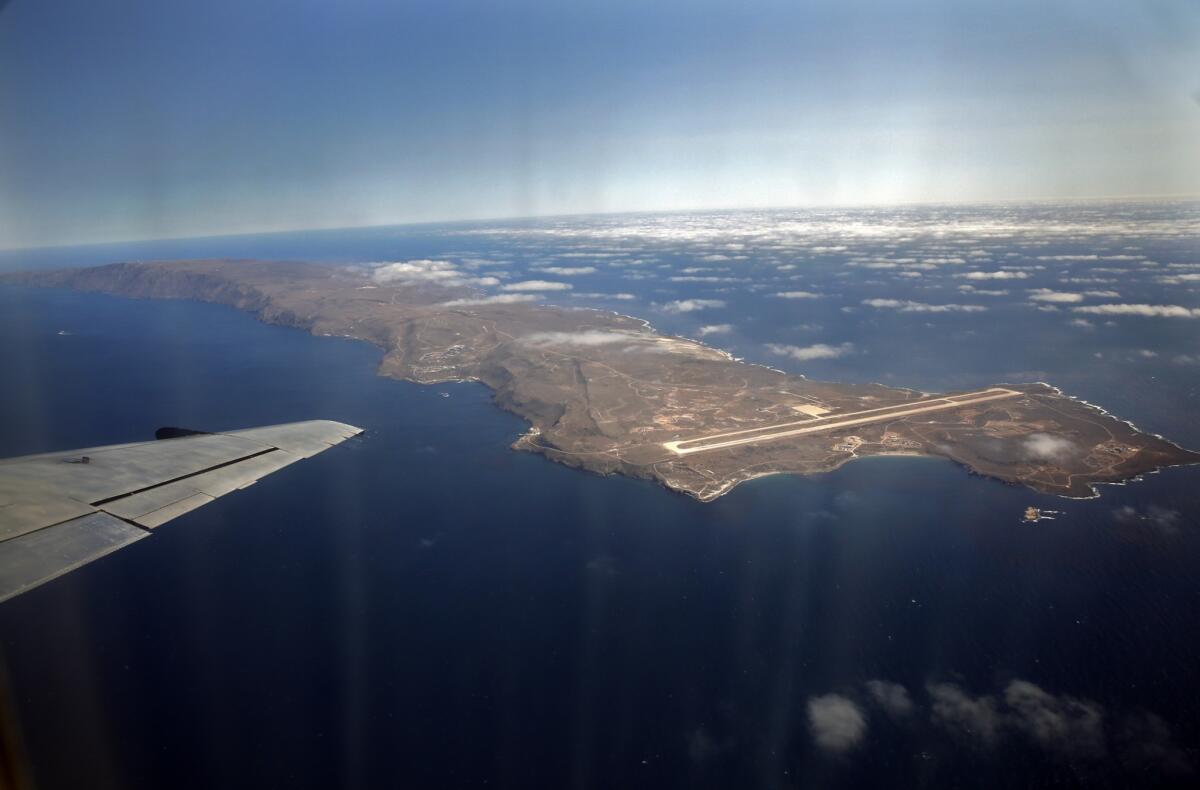1 Marine dead, 8 troops missing after training accident off Southern California coast

- Share via
The search continued late Friday for eight service members who went missing following a deadly accident during a training exercise off San Clemente Island, officials said.
But the amphibious assault vehicle is under hundreds of feet of water, putting it beyond the reach of divers and complicating rescue efforts for eight missing troops.
Lt. Gen. Joseph L. Osterman, the commanding general of the Marine Expeditionary Force, said during an afternoon media briefing that the vehicle, which weighs 26 tons, “sank completely” more than 3,200 feet offshore and “the assumption is it went all the way to the bottom.”
“The AAV is actually in several hundred feet of water — it’s really below the depth that a diver can go to,” he said.
The incident occurred when the vehicle carrying 15 Marines and one Navy sailor began taking on water about 5:45 p.m. Thursday, according to the Marine Corps.
One Marine was taken to Scripps Memorial Hospital La Jolla and later died. Two others were injured and remain hospitalized but are no longer in intensive care.
Five other service members were rescued.
The Marines, with support from the Navy and Coast Guard, were still searching for the missing service members late Friday afternoon.
“We have not moved into recovery operations,” Osterman said. “We’re still looking for them.”
The Marine Corps commandant, Gen. David H. Berger, said that even though the search was continuing, the focus now should be on the troops and their families. He added that he was suspending waterborne operations of all of the more than 800 amphibious assault vehicles across the Marines until the cause of the accident is determined. He said the move was out of “an abundance of caution.”
The name of the Marine who died will be withheld until 24 hours after notification of next of kin, officials said, and “all family members who are affected will be contacted directly by their Marines’ chain of command.”
All the Marines involved were assigned to the 15th Marine Expeditionary Unit, which is based out of Camp Pendleton.
“We are deeply saddened by this tragic incident. I ask that you keep our Marines, sailors and their families in your prayers as we continue our search,” Col. Christopher J. Bronzi, 15th MEU Commanding Officer, said in a statement.
The incident is under investigation, according to the Marines. It occurred during what officials called a “15th MEU and Makin Island Amphibious Ready Group routine training exercise in the vicinity of San Clemente Island” — a Navy-owned land mass about 70 miles off the San Diego County coast.
They had just completed a routine training exercise and were heading back to the Navy ship with a dozen other amphibious assault vehicles, Osterman said.
Troops on board two other amphibious assault vehicles responded quickly but could not stop the vehicle from sinking, Osterman said.
“It’s a very tragic situation,” Osterman said.
The vessels John Finn, Somerset and San Diego, three Navy MH-60 helicopters, the Coast Guard Cutter Forrest Rednour and a Coast Guard MH-60 Jayhawk helicopter are all assisting in the search, according to the Marines.
The Navy and Coast Guard were discussing ways to reach the sunken vehicle to get a view inside it, Osterman said.
This isn’t the first time Marines stationed at Camp Pendleton have been wounded or killed while training with amphibious assault vehicles, which are armored troop transports that carry small units from ship to shore.
In 2017, 15 Marines were injured when an amphibious assault vehicle caught fire during a training exercise.
Another Marine, Sgt. Wesley Rice, drowned inside an amphibious assault vehicle in 2011 after it sank in a boat basin on base.
Known as “Amtracs” or “hogs,” the vehicles weigh at least 48,000 pounds. Upon leaving a ship, the vehicle, which resembles a tank, will drop below the surface of the water before popping back up. They can move about 8 mph at sea and up to 46 mph on land.
The current version of the vehicle is almost 50 years old, though it has been modernized through the years. A replacement, the $15-billion Expeditionary Fighting Vehicle, was canceled in 2011 due to budget constraints.
San Diego Union-Tribune staff writers Andrew Dyer and Phil Diehl and the Associated Press contributed to this report.
More to Read
Sign up for Essential California
The most important California stories and recommendations in your inbox every morning.
You may occasionally receive promotional content from the Los Angeles Times.











